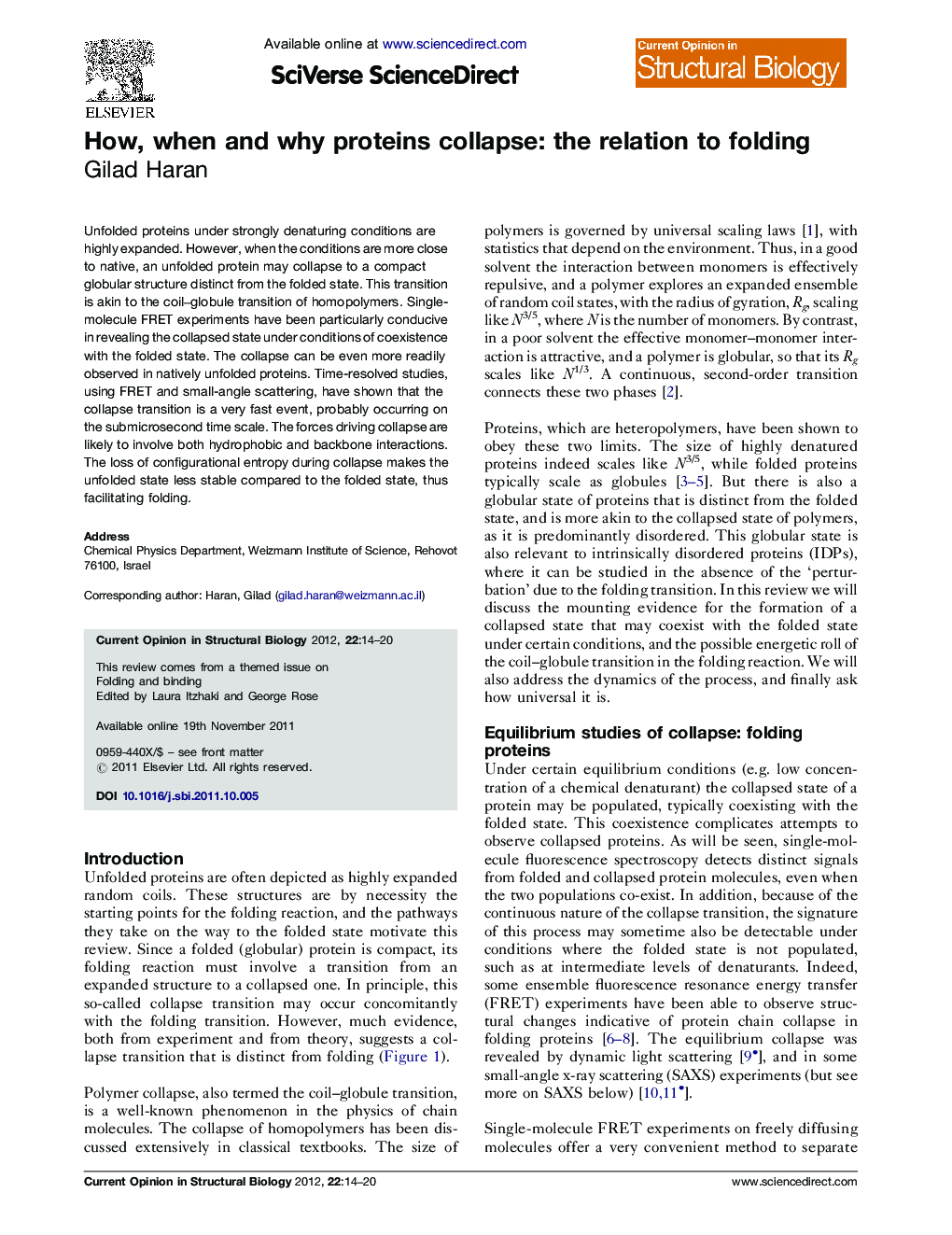| کد مقاله | کد نشریه | سال انتشار | مقاله انگلیسی | نسخه تمام متن |
|---|---|---|---|---|
| 1979211 | 1061668 | 2012 | 7 صفحه PDF | دانلود رایگان |

Unfolded proteins under strongly denaturing conditions are highly expanded. However, when the conditions are more close to native, an unfolded protein may collapse to a compact globular structure distinct from the folded state. This transition is akin to the coil–globule transition of homopolymers. Single-molecule FRET experiments have been particularly conducive in revealing the collapsed state under conditions of coexistence with the folded state. The collapse can be even more readily observed in natively unfolded proteins. Time-resolved studies, using FRET and small-angle scattering, have shown that the collapse transition is a very fast event, probably occurring on the submicrosecond time scale. The forces driving collapse are likely to involve both hydrophobic and backbone interactions. The loss of configurational entropy during collapse makes the unfolded state less stable compared to the folded state, thus facilitating folding.
► Unfolded proteins are expanded under strongly denaturing conditions.
► They collapse when conditions are close-to-native.
► Single-molecule fluorescence shows that collapsed and folded states coexist.
► Time-resolved experiments reveal that collapse usually occurs much before folding.
► Both hydrophobic interactions and hydrogen bonding may be involved in driving collapse.
Journal: Current Opinion in Structural Biology - Volume 22, Issue 1, February 2012, Pages 14–20